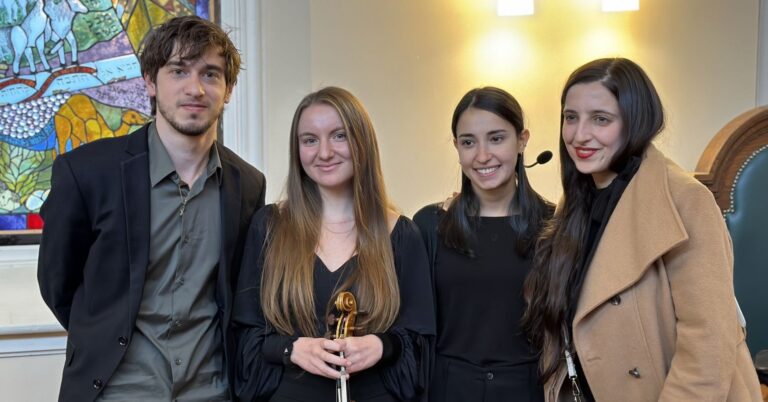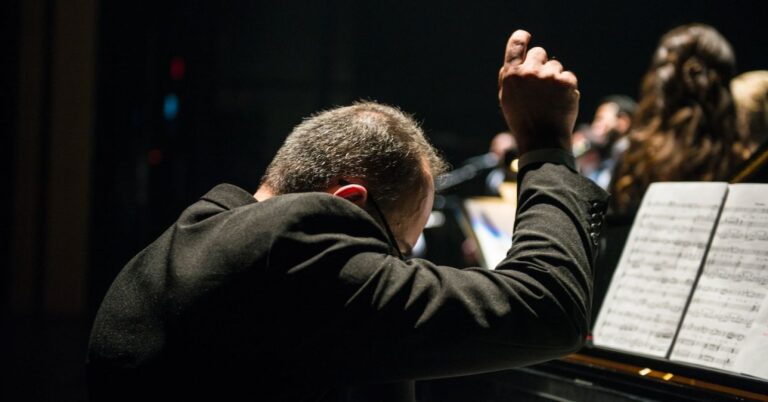This post is part 2 of a series.

Source: cottonbro studio/Pexels
Years ago, when I lived in a co-ed, single-occupancy dormitory with six neighbors, among which three were violinists, one played the guitar, and the rest had played piano at some point, I never experienced any anxiety when I practiced. In a setting where the norm is to practice, perform, or actively listen to music and where no competition was involved, I do not recall ever experiencing tension or bodily sensations that are often associated with performance anxiety. Even though at least one instrumentalist among my dorm neighbors was technically more advanced than me at the time, because she had attended a pre-college music program, I expected my playing to be accepted because my behaviors and interests fit into the implicit norm of the dormitory.
One day, after watching “The Pianist,” a movie starring Adrien Brody, I was overcome with the urge to play some Holocaust movie theme music from memory. Excerpts from “Schindler’s List” suddenly came to mind. Although it wasn’t a flawless rendition, I was pleasantly surprised that one of the neighbors got so moved that she extended an invitation for me to visit her family over the winter break. The neighbor’s parents were originally from Iran. So, it wasn’t anything Jewish that caught her ear, but the heartfelt interpretation and the hauntingly beautiful melodies from John Williams’ composition that captivated her.
The reason that I felt completely at ease when performing pieces that I hadn’t analyzed or practiced beforehand was that I was driven by the need to explore and experience the music, rather than to impress an audience or to showcase my skills. When the ego is not involved, it is easy to enter the flow state, regardless of levels of preparedness or perceived competency in executing the task.
Connecting Personal Goals With a Larger Purpose
With the sharpening of aesthetic sensibilities and a greater awareness of the tonal variations that the violin is capable of, I became more critical of my playing after going through further training. At the same time, I became more anxious in performance situations. This anxious state culminated during a rooftop music recital where all students of the music faculty in residence (who at the time also held a prestigious position at the Philadelphia Orchestra) were invited to perform a showpiece from the Austrian violinist and composer Fritz Kreisler’s vast repertoire of transcribed Viennese-themed violin music.
The pressure of performing in front of peer groups who were once on track to become elite musicians, played at youth symphony orchestras, or won competition awards was immense. Additional pressure came from knowing the background of the guest accompanist of the evening, who also worked for the Philadelphia Orchestra. While many were anxious and excited at the same time, which placed them in the optimal level of physiological arousal to be in flow, especially those who were at the forefront of technical prowess, my anxiety placed me more at the far end of the anxiety scale, which, according to the Yerkes-Dodson Law (explained in a previous post), augurs worse performance than someone scoring in the middle.
As soon as the violinist before me gracefully bowed to the audience after he confidently drew a last long bow across all four strings, my heart started to pound so heavily that I couldn’t recall how my legs, as if filled with lead, dragged my body onto the stage. All I remembered when I was in the middle of the stage was the pianist’s sympathetic smile when he probably sensed that I was completely frozen to the spot and couldn’t decide the appropriate actions to take: whether to signal the pianist or to take the cue.
I was assigned to perform a charming little piece from Franz Lehar’s Operetta “Frasquita” that was transcribed by Kreisler onto the violin, known as “Serenade.” What holds the key to a good performance is a combination of luscious tone, crisp upbow staccato, and effortless execution of a fast overtone passage. The skillful execution of these techniques would collectively create variegated tonal colors within the span of less than three minutes.
Once the pianist and I got started, I realized that my heart was beating so loudly that it blocked out all the metrical demarcations and chord progressions from the piano accompaniment. Without those “external landmarks,” all I could do was clutch back on an internal reference to maintaining the rhythm, rather than interacting with the pianist dynamically and in real-time. When the dreaded moment came, during which I was supposed to run through a fast passage of overtones, my fingers seemed as if they were glued onto the string. The proper mechanics entailed in producing pure natural and artificial overtones demand light and nimble fingers, like seagulls surfacing across the tranquil seawater.
Because I was overly self-conscious throughout the performance and didn’t connect the personal goal of putting up the best performance possible with the larger purpose of the evening’s concert program and how my musical selection relates to fellow performers’ contributions, I didn’t rise above the occasions that evening. Instead, I was driven by the need to be in control of every aspect of the music and myself. In the end, I obtained the exact opposite effect.
Giving Up the Ego and Thriving as a Group
On the other hand, not long after that recital, I experienced a game-changing performance at a local church, when I collaborated with another violinist and a pianist to perform Bach’s Double Violin Concerto. From the get-go, the group has been working toward a common goal of making the performance “conversational” and the interchanges among different instrumental “voices” seamless and artful. There was very little ego competition involved in rendering the performance, as all three instruments seemed to have an equal footing in making the music sound sublime or ruin the performance entirely.
After weeks of disciplined rehearsals, group members bonded by going through the trials and errors together. On performance day, although we observed a few outstanding solo performances shortly before our turn to appear on stage, no one in the group panicked, as the group spirit triumphed over each individual member’s ego. We put our faith in our diligent practice over the course of several weeks, under the direction of a seasoned musician. Somehow, the synergy of the group created a protective shield against my tendency to self-criticize and anxiety about performing in public. In the end, all group members were consumed by the dialogues between the musical voices, and there was little mental space to ruminate on the prospect of incurring catastrophic mistakes. As a result, we all entered into a flow state of being in synergy with one another in our music-making on stage.
Being Other-Focused or a “True Artist” Releases Tension
My more recent experience taught me that when my primary motivation was to delight and entertain, rather than seeking validation from my audience, I was less prone to performance anxiety or experience tension, and more likely to enter into a flow state. I imagine that, on the flip side, if one has already reached a certain height in an artistic career and no longer cares about public recognition or even expects to be understood by the majority of the audience, one can start to embrace oneself as a “true artist” whose intrinsic value will neither be diminished nor increased by the audience’s reactions. At that point, one will also be freed from performance anxiety during public performances.
I have no direct experience with the latter scenario and can therefore only comment on the former scenario. Some time ago, when I stopped by a local café to try out a lavender and honey-flavored latte, I unwittingly entered into an interesting conversation concerning the changing tastes of today’s audience with a Manhattan School of Music graduate who specialized in jazz piano. A week later, we performed a duet in a local restaurant where he was employed as a regular performing artist. Although I do not have much experience in improvising jazz music, do not particularly pride myself on sight-reading skills, and we didn’t find a chance to rehearse beforehand, somehow, an hour and a half elapsed quickly as we transitioned from the rolling music scores on iPads that featured all brand-new pieces to me. Once assuming the role of an entertainer, I was no longer concerned about the “power differential” between us in terms of where we are in our respective music careers. I simply put all my heart into being in sync with the piano and doing my best to enliven the atmosphere and make the diners’ experience more pleasant. As a result, I was in flow throughout.
It was not just the group structure per se that facilitated the flow state, as a week after having performed with the jazz pianist, I carved out my own niche at a different restaurant by putting up an evening of violin music comprising classical, folk, movie, ethnic, and world music. The experience further convinced me that when I meet my clients where they are at in appealing to their aesthetic tastes and deliver what to my best guess could be the type of music that resonates with them, I am more likely to experience flow and less likely to feel anxious. As a result, I did not experience any tension after performing nonstop for two hours.





















+ There are no comments
Add yours